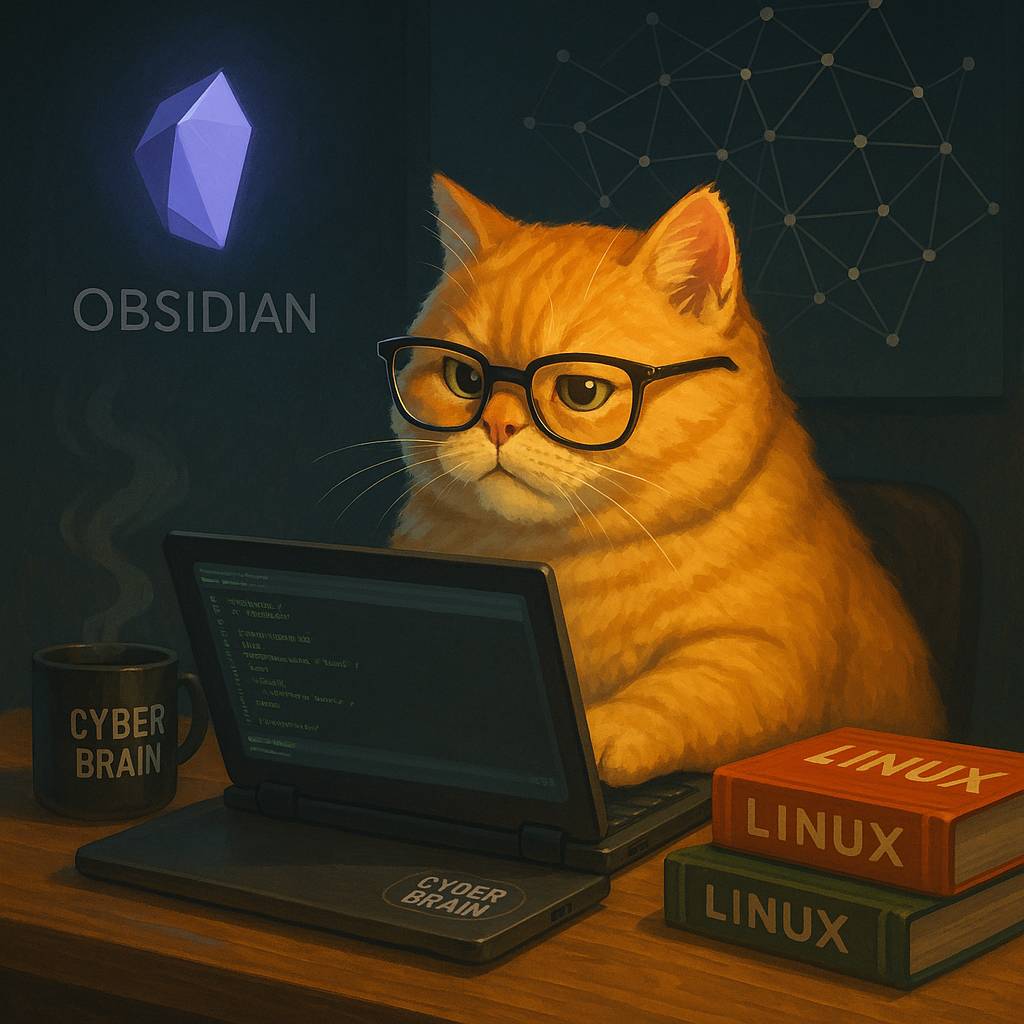A methodical way of learning

Why I’m Switching to Obsidian for My Cybersecurity Journey
As I continue building the foundation for my cybersecurity career, I’ve realized that the tools I use to learn and retain knowledge are just as important as the material itself. Recently, I made a strategic decision to switch from Microsoft OneNote to Obsidian for managing my notes, building a second brain, and ultimately boosting my efficiency as a learner.
Rewriting My Linux Notes, the Right Way
Right now, I’m working through the Grasshopper path on the Linux Journey website. It’s a great supplement to the HTB (Hack The Box) Linux Fundamentals course I am working through. I’m essentially rewriting and refining all my HTB Linux notes while going through the Grasshopper modules—cleaning things up, rewording concepts in my own terms, and filling in any gaps.
I started this review in OneNote, where I had all of my technical notes under a single notebook called “Cyber.” But after some reflection, I realized that Obsidian offered far more in terms of flexibility, structure, and long-term value. So I decided to finish Grasshopper in OneNote, use the migration to Obsidian as an opportunity to review and correct my notes, get familiar with basic Obsidian use, and then complete the Linux Journey Journeyman path entirely in Obsidian.
Why Obsidian? And Why Now?
I’m committing to Obsidian early for several key reasons:
- Linked Thinking: Obsidian allows me to connect notes using
[[wiki-style links]], turning my vault into an interconnected web of knowledge. This is far more powerful than the rigid section/page hierarchy in OneNote. - Markdown Simplicity: All notes are plain-text
.mdfiles, which means they’re portable, version-controllable, and future-proof. - Visual Graph View: Seeing how concepts relate visually gives me another axis of understanding. It helps with recall, especially as my notes grow.
- One Vault to Rule Them All: Like my “Cyber” notebook in OneNote, I’m keeping everything in one Obsidian vault. Linux notes, HTB writeups, bug bounty methodology, tools, cheatsheets—all of it lives in one place now, with powerful search and organization.
Efficiency Isn’t Just a Buzzword
This move is about more than just note-taking. It’s part of a larger commitment I’m making early in my journey: to build efficient workflows that will compound over time. One small but powerful example is how I recently modified my .bashrc file to open man pages directly in Vim by setting this environment variable:
export MANPAGER="nvim +Man!"
This lets me view man pages with syntax highlighting, fast scrolling, and better search inside an editor I’m already learning to master. It might seem like a small thing, but over hundreds of uses, it’s a huge time saver—and it also means I can more easily annotate or reference man pages in my Obsidian notes.
Looking Forward
By the end of this transition, my entire Linux foundation will be documented in Obsidian—organized, interlinked, and review-ready. From there, I’ll keep expanding it with each TryHackMe room, each Hack The Box machine, each write-up, each bug bounty recon checklist. Obsidian won’t just be a note app—it will be my second brain.
Switching now isn’t slowing me down. It’s setting me up to fly later.
If you’re just getting started in cybersecurity or Linux and you’re feeling overwhelmed, consider investing a little time up front in your workflow. The tools you use will either hold you back or accelerate you. I’m choosing acceleration.


Leave a Reply